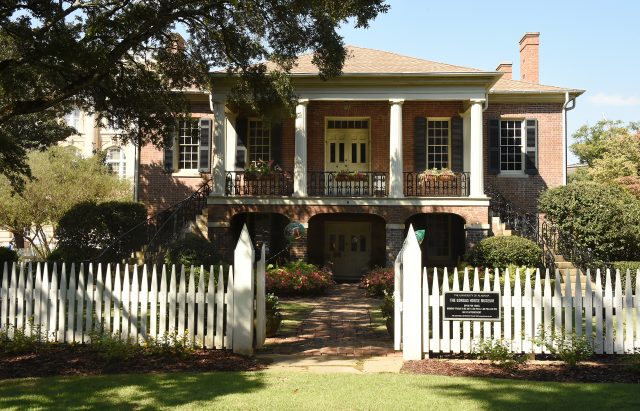
ua.edu
From the construction of the initial buildings to the destruction of the campus on April 4, 1865 when Union troops descended on Tuscaloosa, enslaved people performed much of the labor at the University of Alabama.
They served on construction crews for all university buildings, maintained the grounds and facilities, cooked, laundered, performed janitorial duties and did other assorted tasks essential to the operations of the institution. Several even assisted the faculty in their pathbreaking research.
Viewed as property either owned or leased by the university, they suffered the abuses of students and faculty. Some resisted. Some were punished. The majority established communities among the other enslaved laborers in order to cope. Overall, enslaved men, women, and children labored, survived to the best of their abilities, and helped to build the campus.
Indeed, here is a list of hallowed grounds that current students, faculty, staff, and guests walk upon daily.
Gorgas House
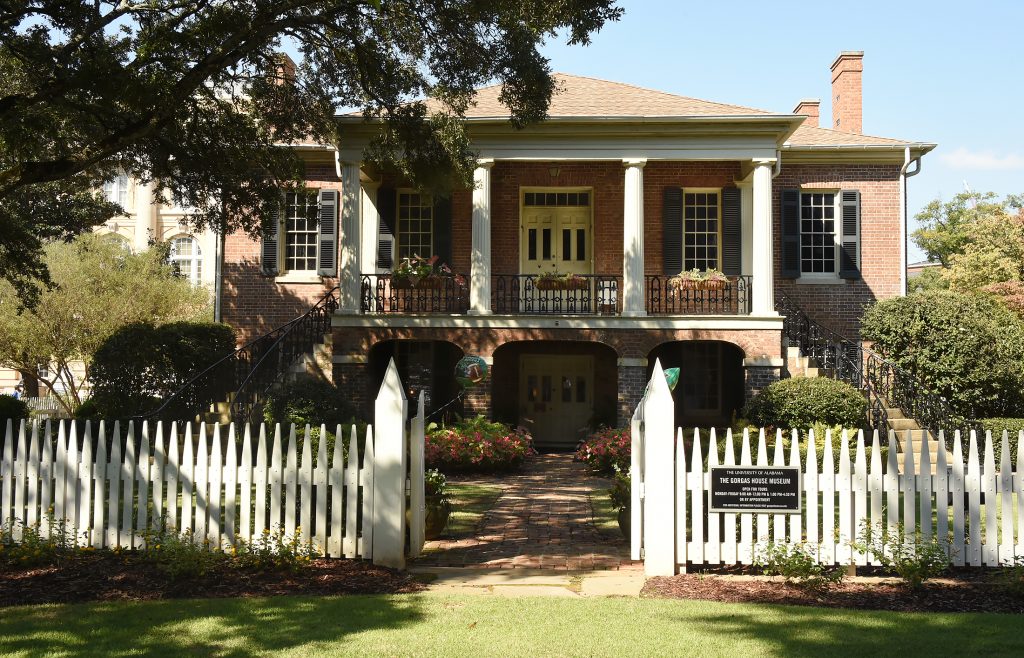
As the first building on campus, enslaved people worked on its construction as well as all other buildings later erected on this campus. According to two university historical chroniclers, Ben was the first enslaved person purchased by trustees. He worked under the direction of the architect, did landscaping, and maintained fencing before being sold shortly after the University opened.
While functioning as the Campus Dining Hall, enslaved people prepared food in a two-story brick kitchen where Morgan Hall currently existed (yellow building in background), transported meals and water, and served students therein. Moses and other enslaved workers routinely dealt with rowdy students as they served and cleaned up after the rowdy students until administration converted the building to the Steward’s House.
After the conversion, university owned men and other hired-out enslaved individuals continued to work in the building up until the destruction of the campus. Currently, it serves as a museum dedicated to the life and work of the Gorgas family, with particular emphasis on Amelia Gayle Gorgas.
Morgan Hall
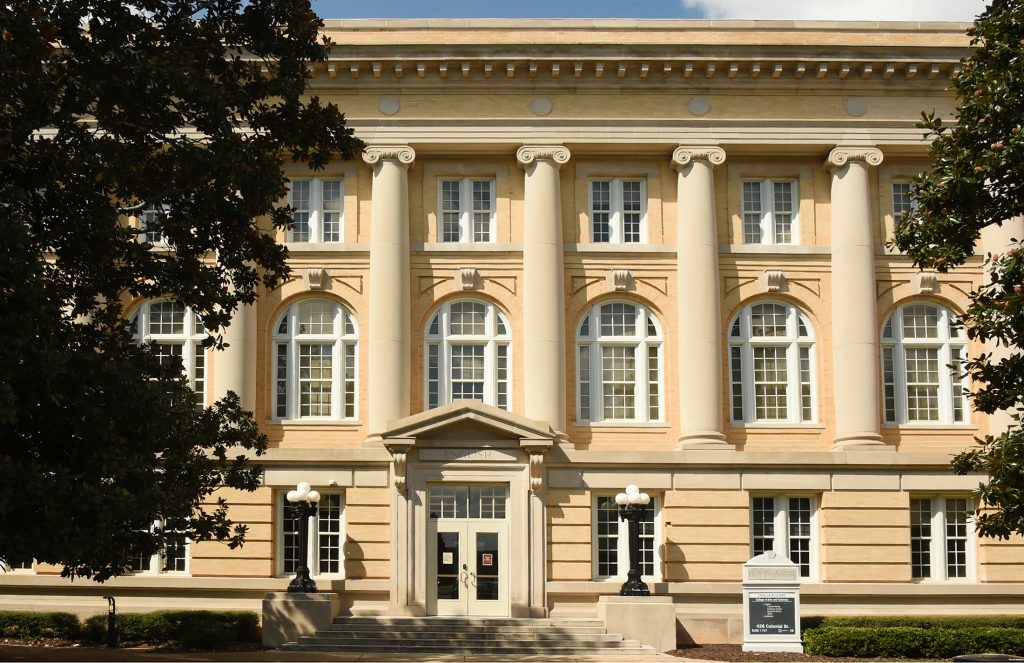
Prior to the construction of the current building, a two-story brick kitchen that prepared food for the Campus Dining Hall was located here. Enslaved men and women prepared the food. Enslaved men, women, and children carried buckets of water to the building and then moved food to the dining hall.
John Tyler Morgan, the building namesake, was a former Confederate general who worked to extend Jim Crow segregation across the nation, advocated for the forced African American migration, and rose to leadership in the Montgomery chapter of the Ku Klux Klan.
Morgan’s portrait hung in the foyer until late Fall 2015. Students, faculty, staff, and visitors are now greeted by a piece art from the university’s Paul R. Jones Collection of American Art.
“Cassandra” by Benjamin Smith invites individuals to reflect of Morgan’s legacy, slavery, and race relations more broadly.
Little Round House/Guard House
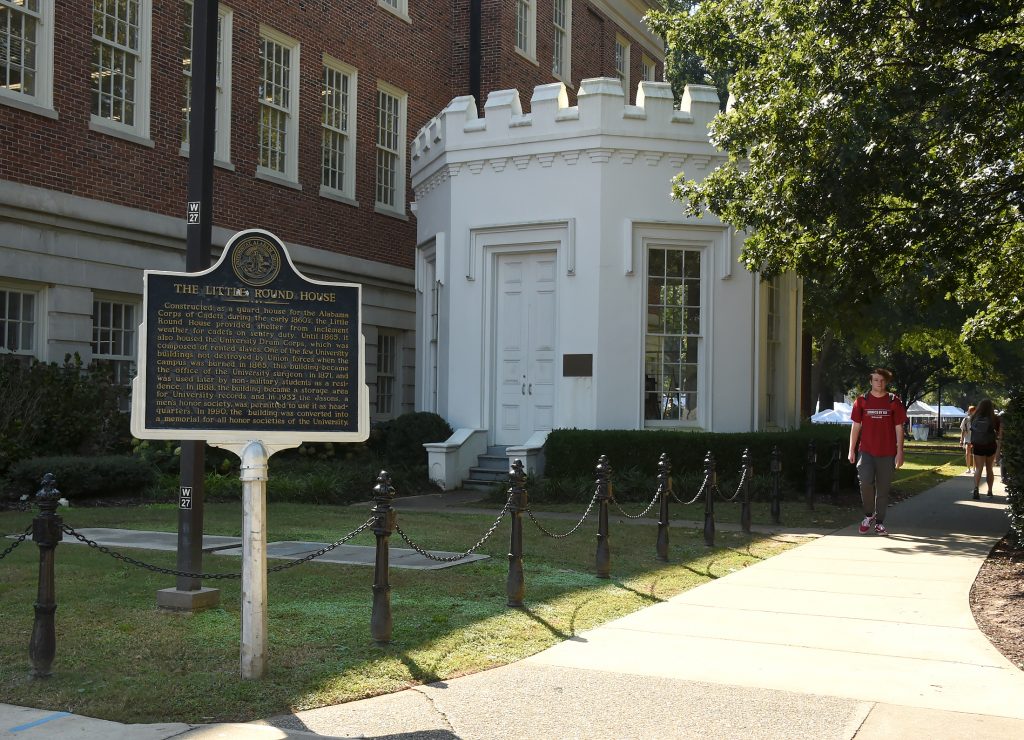
Built in 1862, this building provided shelter to student cadets on sentry duty during inclement weather. More importantly, it served as the headquarters for the Drum Corps, which consisted of rented slaves.
Neal, Gabe and Crawford assisted with cadet drilling and provided music for events on campus and in the Tuscaloosa community. After replacing Neal in 1864, Crawford and Gabe performed their “duty” and alerted cadets when federal forces approached the university in the early morning of April 3, 1865.
It is one of the few surviving antebellum structures with a historical marker acknowledging both slavery and the contributions of enslaved people to the institution. This was not always the case.
The Little Round House embodied a particular Lost Cause narrative of the Civil War and justification of racial subordination during the Reconstruction and Jim Crow segregation eras. In commemoration of the centennial anniversary of the Civil War, students chose an image of the structure with both Confederate and United States flags flying above it. Hence, students transformed the structure into a symbol of the massive white resistance to desegregation.
As of October 2016, this slave cabin became a no tailgate area during Alabama home football games. It is now elevated to a similar status given to the Mound and other sites of memory deemed as sacred.
The Mound
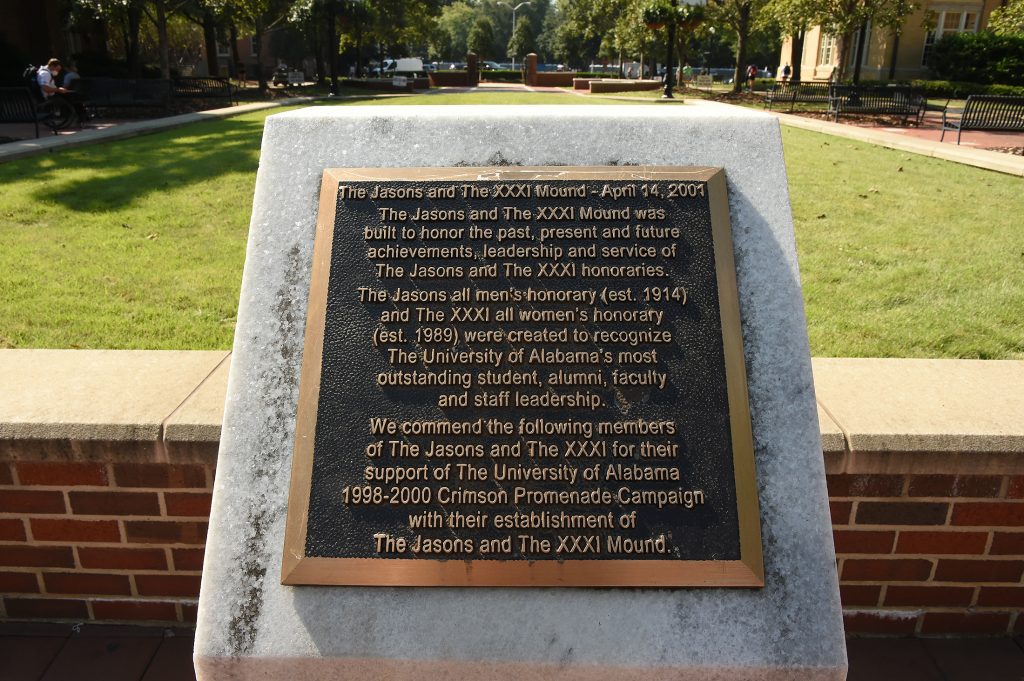
Franklin Hall (built in 1833) was one of the buildings destroyed by federal forces on April 4, 1865. Unsalvageable bricks were placed in the memorial to the antebellum campus, slavery, and Confederate defeat.
Enslaved servants worked in all of the dormitories (barracks, 1861-1865). The enslaved men who served the students of Franklin Hall often slept where it was possible in the stairwell, hallway, and even on the surviving front stoop.
Presidents’ Mansion
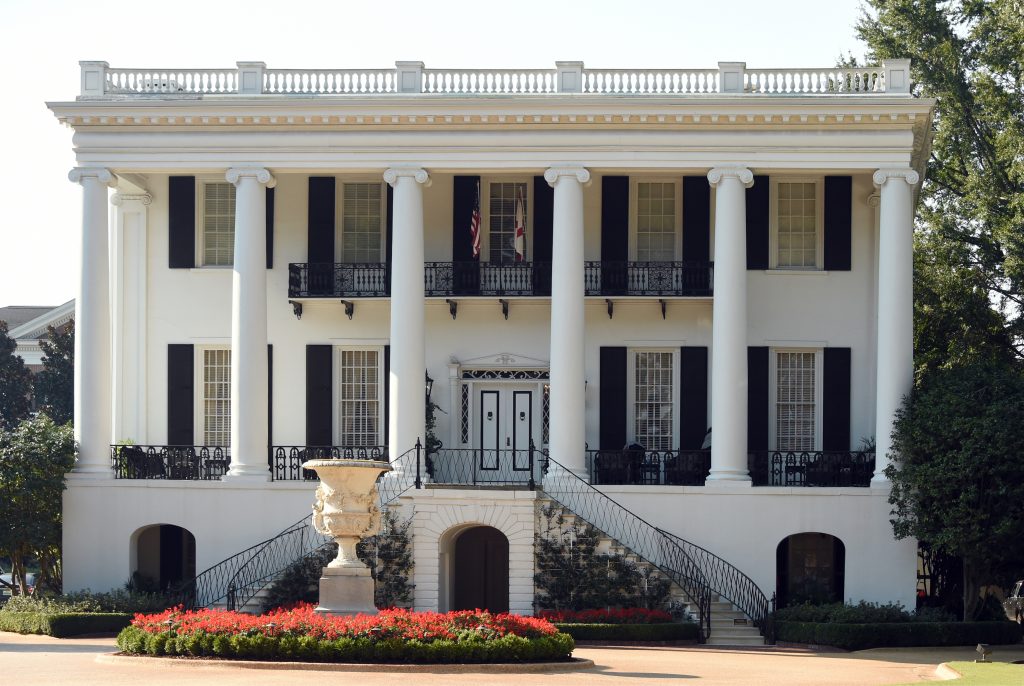
Built in 1838, both Presidents Manly and Garland employed their own slaves in the Presidents’ Mansion. They also rented out others for service at the mansion, especially when entertaining. The men, women, and children who worked at the mansion often had a higher quality of clothing and shoes. Embodying the reputation of the school, they looked the part.
The four original outbuildings remain. Two outer buildings (one shown) were originally used as the quarters for the Presidents’ personal slaves. The one closest to the mansion was employed as the kitchen. The other contained the well and was used as a washroom.
During the events leading up to the destruction of the campus, President Garland employed enslaved cooks and servants to gather necessary food and supplies for the retreat from Tuscaloosa to Marion, Alabama. According to university lore, Mrs. Garland and one of her enslaved servant prevented its destruction. However, most enslaved campus laborers welcomed the “Yankee invaders.”
Nott Hall
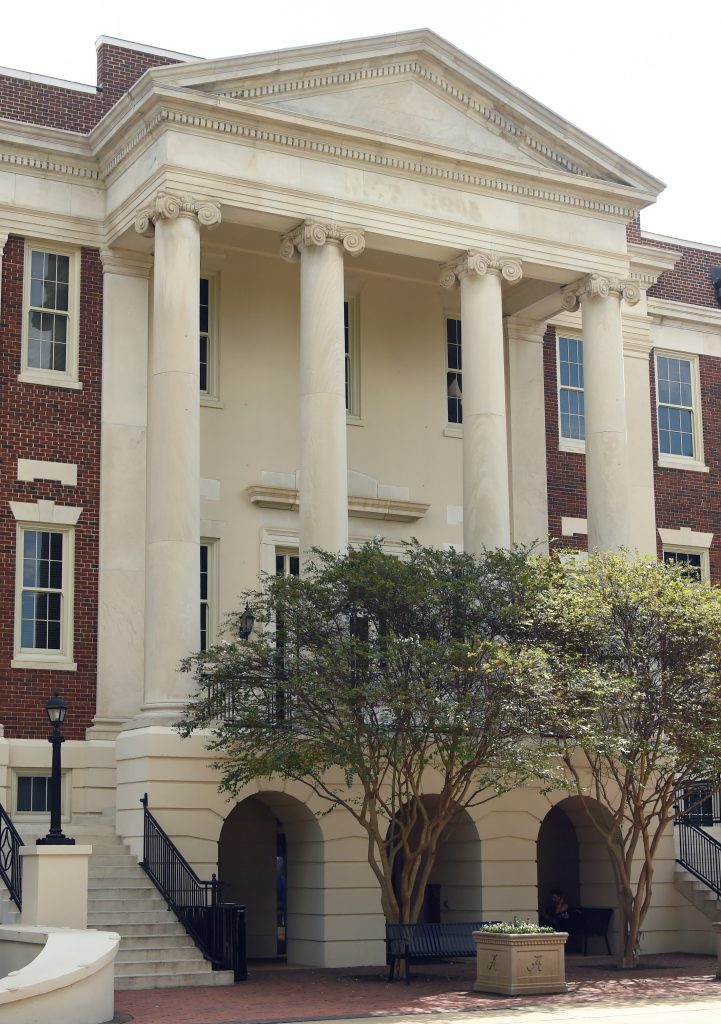
The former Nott Hall has been named Honors Hall. Constructed in the early 1920s, it is named after Josiah C. Nott, a physician and racial theorist from Mobile, Alabama, who is one of the founders of the Medical School in Mobile. He is more known for racial theory works, including the Types of Mankind. In this 1854 publication, Nott espoused a belief in polygenesis (multiple and separate evolutionary origins) as a justification for slavery, racial subordination, and white supremacy.
After the Civil War and emancipation, Nott did not change his views on African Americans. He felt that they as well as other inferior races lacked the capacity to learn and would remain intellectually deficient.
In recent years, the namesakes of Nott and Morgan Hall has raised questions of what to do with these buildings. Does the institution rename them? Add new revised plaques and markers? Name new buildings in order to bring balance? But the question remains – what to do this racial past?
Nott and Morgan Halls are not the only buildings with contested namesakes. From the construction of Woods Quad to Nott Hall, each post-emancipation building is named after individuals connected to slavery, the Civil War, postwar politics of exclusion, and/or violence.
Presidents Woods, Manly, and Garland oversaw the institution of slavery. Faculty Tuomey, Barnard, and Smith used enslaved labor on campus in their teaching and research. From the university’s long history, there are examples of possible solutions.
This is neither the original location nor design of the United Daughters of the Confederacy Boulder. It has been moved and reinterpreted in its current location.
Originally located in the Rotunda Plaza, the monument was placed on a small mound and featured a brick enclosure.
Dedicated in 1925, the United Daughters of the Confederacy Memorial Window was moved from the first Amelia Gayle Gorgas library (now Carmichael Hall) to the renovated Gorgas Library and finally to W. S. Hoole Special Collections in Mary Harmon Bryant Hall. Designed by Tiffany Studios of New York, each move reflects a reinterpretation.
Initially placed in the Amelia Gayle Gorgas Library’s lobby in Fall 2015, the concerns and complaints of students, faculty, staff, and alumni over the casual depictions of slavery in this large oil painting caused its removal in late summer 2016.
On the other hand, audiences celebrated Freedom and Fire, an opera commemorating the last days of the Civil War and the campus’s destruction. Robin Behn, acclaimed poet and English professor in The University of Alabama College of Arts and Sciences, included two scenes recognizing the contributions of enslaved people.
Scene III featured a musician observing sleeping sentry duties at the Guardhouse. Audiences heartily applauded Scene VII in which Mrs. Garland and her enslaved female servant gave different pleas for saving the Mansion from destruction by federal soldiers.
Apology for Slavery Marker
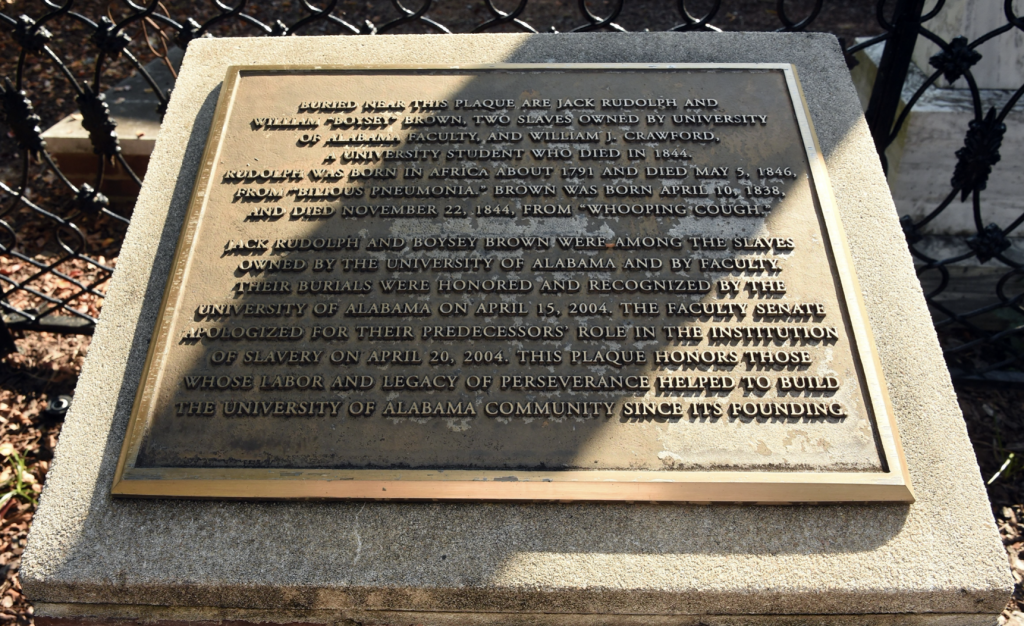
Before most other institutions nationally, the University of Alabama formally apologized for owning and using enslaved laborers. Spearheaded by Al Brophy and other faculty, they approached and secured the apology from the Faculty Senate in 2004.
As a leader in this national discussion, the University erected an apology marker. Since 2004, conversations on how to deal the institution’s racial past with slavery and race more broadly. Education, lectures, alternate tours, and other efforts at sustained dialogue remain essential.




